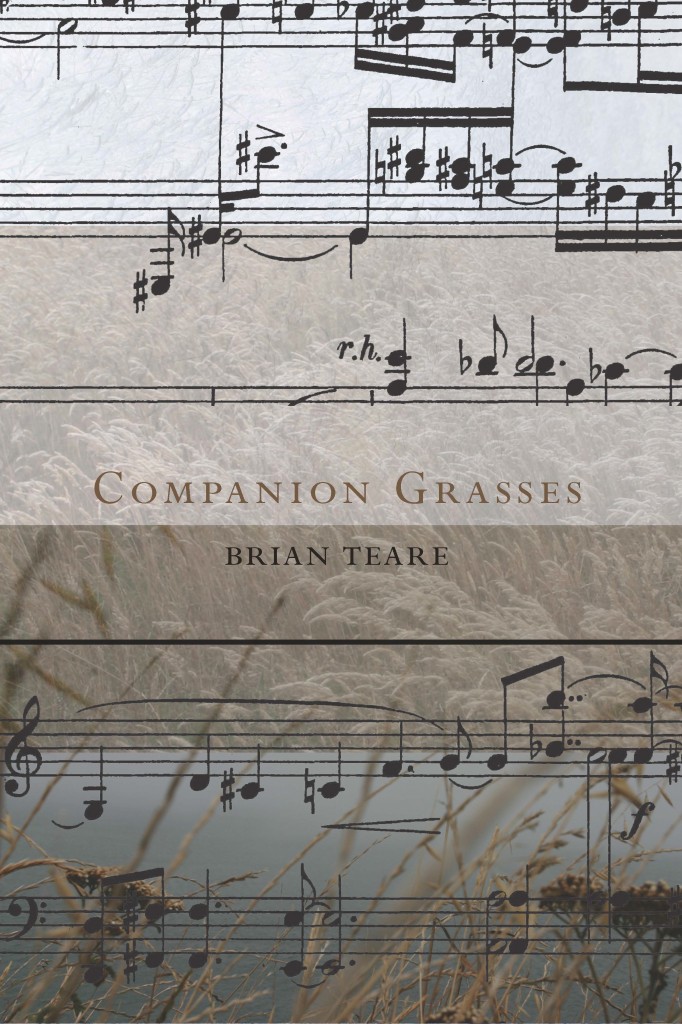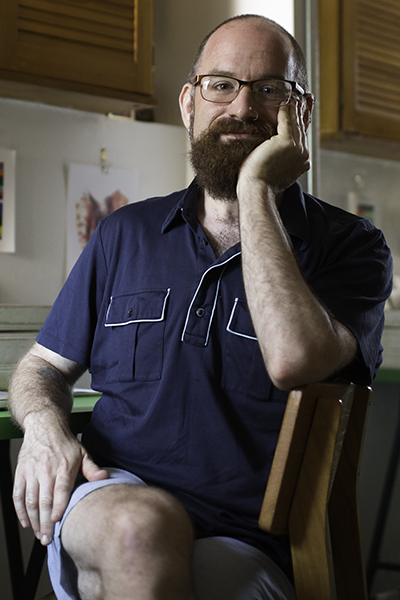When writing many of the poems in my fourth book, Companion Grasses, I was falling in love: with the bioregions and literary culture of Northern California, with one man and then a second, with Transcendentalist poets and thinkers, and with grasses. I didn’t particularly care whether the grasses I loved were properly called objects or subjects because what critic Jane Bennett calls their “vibrant matter” exerted a forceful claim on me. I often found myself writing love triangles between myself, a lover, and a grass species whose presence seemed a companion on the adventure. Like “Star Thistle,” those poems assemble a network of coming to know the world differently: I fell in love with Matt and the Quakinggrass at Big Sur, then with Robert and the Tall Flatsedge in Point Reyes. But by the time I fell in love with a field and wrote “Star Thistle,” I had also suffered new losses: in 2007, my father died suddenly, and then in 2008, my friend the poet Reginald Shepherd did too. After which I found myself with a new companion. And though it’s pretty much against my ethics to hate a plant, I really went for it: Yellow Star Thistle, Centaurea solstitialis, not so much companion as complaint.
Many botanical and agricultural authorities consider Star Thistle to be a weed, and after reading an earlier version of this poem in which I did too, the wonderful poet Melissa Kwasny gently suggested I re-assess my relationship to that word. What is a weed in one cultural context is medicine or food in another; what is invasive in one ecosystem is native to another; and plants, like matter, as William James would wisely say, have no ideals. What I brought to the Star Thistle was what Adam Phillips in his marvelous book Darwin’s Worms would call the problem of grieving in a secular age. After reading Phillips, I realized I was not only in the grip of a kind “bad mourning” that could not admit to the implicit transience of all Being, but I’d also fixated on the Star Thistle as a metaphor for nature’s paradoxical destructive fecundity, its endless capacity for mortality. To mourn properly, I suspected, I’d have to rid myself and my poem of the thistle’s metaphoricity, and just let it be ingenious, prodigious, destructive: a process as difficult as uprooting the thistle itself!
I first read Reginald’s poems when I was an undergraduate, a baby poet and a baby gay. His work had always been part of how I understood both contemporary poetry and a lyric postmodern queer poetics, and he was prolific—I couldn’t imagine a world in which I would not open a literary journal and see new poems. Though I knew his health was compromised by living with HIV and the medications to treat it, it never really occurred to me that he would pass so young. He was a friend and informal mentor, a pugilist for poetics, and a survivor of poverty, neglect, racism, homophobia, and HIV. I admired and loved him. Like Whitman, he was a lover of men and a celebrator of the erotic; unlike Whitman, he was not particularly given to metaphysics. His ecstatic materiality was mostly linguistic, and his lived experience as a black gay man had given him serious qualms about the democratic project. But even Whitman had his doubts, infrequent though they were. So my bad mourning called out across the centuries to Whitman’s meditation on the fecundity of death in his remarkable and unsettling poem, “This Compost.”
One last thing: this poem was drafted on Atlas Peak, above Napa Valley. I was staying in a cabin owned by my friend, the poet Jane Mead, a gift of time and space she had often given me in the years between 2007 and 2009, precarious years during which I lost my father, my full-time job, and my health. I wrote the final section of Companion Grasses under the auspices of her generosity, and the book is dedicated in part to her. The field I had fallen in love with—another love affair !—lay just outside her family property, just off a trail leading toward a ridge above Napa Valley. It’s important to mark here that the Atlas Fire in 2017 burned through both Mead Ranch and this mountain landscape, and that Jane herself has since died. She died on September 8, 2019, almost eleven years to the day that Reginald did: September 10, 2008. Both deaths seem oddly historical now, distant from this time of accelerated mass deaths from COVID-19, strategic government inaction, federal corruption, and flagrantly racist policies. During this time when wildfires have returned to the mountains above Napa Valley, the western US has burned, and hurricane after hurricane has battered the Gulf Coast, I return to this poem, and to mourning, with a new kind of clarity. Today I mourn and resist the continued, deliberate injustices of human society against humans and nonhumans. And though I continue to miss my friends, today I mourn them differently, “as if the human were over/& the wild deer in us were released at last/at dusk to disappear into the stand of manzanita far across the field I love.”




